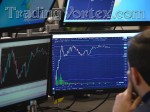Table Of Contents:
- Introduction – Understanding Market Liquidity:
- Breaking Down Market Liquidity:
- Why Market Liquidity Is Crucial for Trading:
- Current Market Liquidity Trends in 2024:
- Challenges That Threaten Market Liquidity:
- How to Measure and Analyze Market Liquidity:
- Proven Strategies to Manage Liquidity Risks:
- Real-Life Examples of Liquidity Events:
- The Future of Market Liquidity:
- Conclusion – Navigating Market Liquidity Like a Pro:
- Frequently Asked Questions (FAQs) on Market Liquidity:
- What Exactly Is Market Liquidity?
- Why Should Traders Care About Liquidity?
- How Do I Measure Market Liquidity?
- What Are Some Challenges Affecting Market Liquidity?
- How Can I Manage Liquidity Risks?
- Can Liquidity Affect Asset Prices?
- How Do Central Banks Influence Market Liquidity?
- What Are Some Real-Life Examples of Liquidity Events?
- How Do I Know If an Asset Is Liquid?
- How Do Liquidity Risks Affect My Investments?
Introduction – Understanding Market Liquidity:
Hey there, fellow traders and investors! Let's kick things off by diving into the concept of market liquidity. Understanding this fundamental aspect of trading can make a world of difference in your investment journey.
What Is Market Liquidity? A Simple Explanation:
Imagine you're at a bustling marketplace, eager to buy or sell goods. The ease with which you can make these transactions without causing a stir in prices mirrors the idea of market liquidity. In financial terms, liquidity refers to how swiftly and effortlessly an asset can be bought or sold at a price reflecting its intrinsic value. Cash is the epitome of liquidity, as it can be exchanged instantly without any hassle. On the flip side, assets like real estate or certain collectibles might take longer to sell and could require price reductions to attract buyers, indicating lower liquidity.
Why Market Liquidity Matters for Traders and Investors:
Now, you might wonder, why should I care about liquidity? Well, let me share a personal experience. A few years back, I invested in a small-cap stock, enticed by its promising growth potential. However, when I decided to sell my shares, I found it challenging to find buyers without significantly dropping the price. This ordeal taught me a valuable lesson: liquidity plays a crucial role in trading.
High liquidity in a market means you can execute large trades without causing substantial price changes, ensuring fair and stable prices. This environment fosters confidence among traders and investors, knowing they can enter or exit positions with ease. Conversely, low liquidity can lead to increased volatility and higher transaction costs, as selling or buying large quantities can sway prices unfavorably.
Moreover, liquidity isn't just about ease of transactions; it reflects the overall health and efficiency of a market. Markets with high liquidity tend to be more robust, with tighter bid-ask spreads and quicker execution times, making them attractive to a wide range of participants. On the other hand, markets lacking liquidity can be more susceptible to manipulation and abrupt price swings, posing additional risks to investors.
In essence, understanding and considering market liquidity helps in making informed trading decisions, managing risks effectively, and optimizing investment strategies. So, next time you're eyeing an asset, take a moment to assess its liquidity – it might save you from potential headaches down the road.
Breaking Down Market Liquidity:
Understanding market liquidity is essential for anyone navigating the world of trading. Let’s take a closer look at what it means and the key factors that influence it.
Market Liquidity Defined – A Closer Look:
Market liquidity measures how easily an asset can be bought or sold without causing a significant change in its price. In liquid markets, transactions occur quickly and at prices close to an asset’s fair value. However, in less liquid markets, selling or buying often comes with price concessions and delays.
Think of it like selling a popular smartphone model versus an outdated one – demand and accessibility can make all the difference. Similarly, liquid markets, such as those for widely traded stocks, offer quick trades, while niche assets like rare antiques or thinly traded securities might take more effort to offload.
The Two Main Types of Liquidity:
Breaking liquidity into its two primary types helps clarify its role in trading:
Asset Liquidity – Selling Without Stress:
Asset liquidity focuses on how quickly and easily an individual asset can be converted into cash. For example, cash itself is the most liquid asset because it requires no conversion. Stocks of major companies often have high liquidity because they trade frequently and in large volumes. On the other hand, assets like real estate, rare collectibles, or niche cryptocurrencies are considered less liquid, as finding buyers at fair market value can take time.
Market Liquidity – Trading Without Turbulence:
Market liquidity refers to the overall ability of a market to handle large transactions efficiently without significantly altering prices. Markets with high liquidity typically feature narrow bid-ask spreads and stable prices, allowing traders to execute large orders with minimal disruption. In contrast, low-liquidity markets can experience erratic price movements, making them riskier for investors.
Top Factors That Influence Market Liquidity:
Several forces shape the liquidity of both individual assets and entire markets. Keeping these in mind can help traders assess risk and opportunity:
- Trading Volume: Markets with high trading volumes tend to have greater liquidity. A high number of trades ensures that buy and sell orders are easily matched, making transactions faster and smoother.
- Market Participants: The presence of a diverse pool of traders – ranging from retail investors to institutions and market makers – bolsters liquidity by ensuring continuous activity and price stability.
- Information Transparency: Markets thrive on transparency. When accurate and timely data is accessible, investor confidence increases, leading to higher participation and, consequently, improved liquidity.
- Economic Environment: Macroeconomic factors like interest rates, inflation, and overall market sentiment play a crucial role in determining liquidity. For example, during periods of uncertainty, investors may hold back, leading to lower liquidity.
By breaking down market liquidity into these components, we can see why it’s such a vital concept. Whether you’re trading stocks, commodities, or even digital assets, understanding liquidity is key to making informed decisions. After all, knowing when, and how, you can enter or exit the market can mean the difference between a smooth trade and a costly misstep.
Why Market Liquidity Is Crucial for Trading:
Understanding market liquidity is essential for traders and investors, as it significantly influences trading costs, market stability, and the effectiveness of investment strategies. Let's explore why liquidity is so crucial in the trading world.
How Liquidity Impacts Trading Costs and Profitability:
Liquidity directly affects the cost of trading. In highly liquid markets, the abundance of buyers and sellers leads to tighter bid-ask spreads: the difference between the price buyers are willing to pay and the price sellers are asking. This narrow spread reduces transaction costs, allowing traders to retain more of their profits. Conversely, in less liquid markets, wider spreads can eat into profits, making trading more expensive.
For instance, when I first started trading, I ventured into a small-cap stock with low liquidity, attracted by its potential upside. However, I quickly realized that the wider spreads and difficulty in executing orders without affecting the price significantly reduced my profitability. It was a valuable lesson in appreciating the importance of liquidity in trading decisions.
The Role of Liquidity in Maintaining Stable Markets:
Liquidity is the lifeblood of stable financial markets. It ensures that assets can be quickly bought or sold without causing drastic price changes, contributing to market resilience. In liquid markets, the continuous flow of transactions helps absorb shocks and prevents extreme volatility. On the other hand, illiquid markets are more susceptible to sharp price swings, which can undermine investor confidence and lead to broader financial instability.
Liquidity’s Influence on Smart Investment Strategies:
Incorporating liquidity considerations into investment strategies is vital for optimizing returns and managing risk. Liquid assets offer flexibility, enabling investors to enter or exit positions swiftly in response to market developments. This agility is particularly important during times of market stress when the ability to quickly adjust positions can protect against losses.
Moreover, understanding liquidity trends can inform strategic decisions. For example, the growing "equitification" of credit markets – blending features of public and private markets – has created more flexible investment opportunities. New trading instruments and processes are enhancing the liquidity of public bonds and loans, allowing investors to tailor their exposures based on liquidity needs.
In my experience, maintaining a portion of the portfolio in highly liquid assets has provided the flexibility to capitalize on sudden market opportunities and mitigate unforeseen risks. Balancing liquidity needs with investment goals is a hallmark of a robust investment strategy.
In summary, market liquidity plays a pivotal role in trading and investing. It affects transaction costs and profitability, underpins market stability, and shapes effective investment strategies. Recognizing and adapting to liquidity conditions can enhance decision-making and contribute to long-term success in the financial markets.
Current Market Liquidity Trends in 2024:
Staying updated on market liquidity trends is essential for traders and investors, as these dynamics can significantly influence trading strategies and outcomes. Let's delve into the key liquidity trends shaping the financial landscape in 2024.
AI and Tech Transformations in Liquidity Management:
Artificial intelligence (AI) and machine learning (ML) are revolutionizing liquidity management. These technologies enhance risk assessment, improve capital allocation, and streamline trading processes, leading to more efficient markets. However, the rapid reaction capabilities of AI can also increase market volatility during periods of stress.
In my experience, integrating AI into trading strategies has been a game-changer. The ability to process vast amounts of data in real-time allows for more informed decisions, but it's crucial to remain vigilant about the potential for increased volatility.
How Regulatory Changes Are Shaping Liquidity Today:
Regulatory bodies are implementing measures to strengthen market liquidity and stability. For instance, the U.S. Securities and Exchange Commission (SEC) has increased daily liquid asset requirements for money market funds to 25% from 10%, and weekly liquid asset requirements to 50% from 30%. These changes aim to mitigate the risk of sudden redemptions and enhance the resilience of financial markets.
Navigating these regulatory shifts requires adaptability. Staying informed and adjusting strategies accordingly can help maintain compliance and capitalize on new opportunities.
Global Economic Forces Driving Liquidity Fluctuations:
Global economic factors continue to influence market liquidity. For example, India's rise as Asia's leading market for company listings in 2024 has attracted significant global capital, enhancing liquidity in its equity markets. Conversely, China's stricter regulations and economic challenges have led to a decline in IPO activity, affecting market liquidity.
Understanding these global dynamics is crucial. Diversifying investments and staying attuned to international market trends can help mitigate risks associated with liquidity fluctuations.
In summary, the interplay of technological advancements, regulatory developments, and global economic shifts is reshaping market liquidity in 2024. By staying informed and adaptable, traders and investors can navigate these changes effectively, making informed decisions that align with the evolving financial landscape.
Challenges That Threaten Market Liquidity:
Navigating the trading landscape requires a keen awareness of factors that can disrupt market liquidity. Let's explore some of the key challenges that have been making waves recently.
The Ripple Effects of Market Volatility on Liquidity:
Market volatility often leads to reduced liquidity, as traders become hesitant to engage, widening bid-ask spreads and increasing transaction costs. A recent example is the cocoa market, where hedge funds and speculators exited due to increased volatility and rising trading costs, leading to record high cocoa prices and reduced liquidity.
In my own trading experience, I've noticed that during volatile periods, it's like everyone's gripping the edge of their seats, making it tougher to execute trades without impacting prices.
Reduced Market-Making Activities – A Growing Concern:
Market makers play a crucial role in providing liquidity by continuously quoting buy and sell prices. However, during periods of heightened volatility, their activity can diminish, leading to wider spreads and less efficient markets. For instance, during the last triple-witching of 2024, increased volatility was observed as stock options, index options, and index futures expired simultaneously, leading to heightened trading activity and potential liquidity challenges.
I've found that when market makers pull back, it can feel like the safety net has been yanked away, making trading more precarious.
Liquidity Risks in Emerging and Frontier Markets:
Emerging and frontier markets often face unique liquidity challenges due to factors like political instability, economic uncertainty, and lower trading volumes. For example, in 2024, emerging market issuers rated 'CCC+' and lower declined, indicating potential liquidity concerns.
Investing in these markets can be like navigating uncharted waters; the potential rewards are significant, but the risks require careful consideration.
Understanding these challenges is essential for developing strategies to mitigate risks and maintain effective trading operations.
How to Measure and Analyze Market Liquidity:
Understanding how to measure and analyze market liquidity is essential for traders and investors aiming to navigate the financial markets effectively. Let's delve into some key indicators and tools that can help assess liquidity.
Top Liquidity Indicators Every Trader Should Know:
- Bid-Ask Spread: This is the difference between the highest price a buyer is willing to pay (bid) and the lowest price a seller is willing to accept (ask). Narrow spreads typically indicate high liquidity, while wider spreads suggest lower liquidity.
- Trading Volume: The total number of shares or contracts traded for a particular asset. Higher trading volumes often signify greater liquidity, as more market participants are buying and selling the asset.
- Market Depth: This refers to the market's ability to sustain large orders without impacting the asset's price. A deeper market can absorb large trades with minimal price fluctuation, indicating higher liquidity.
- Volume Profile: A charting tool that displays trading activity over a specified time period at specific price levels. It helps identify high and low volume nodes, which can indicate areas of strong support or resistance.
Best Tools and Techniques for Assessing Liquidity:
- Volume Profile Indicators: Tools like the Volume Profile indicator on TradingView help visualize trading activity across different price levels, aiding in identifying liquidity zones.
- Liquidity Levels Indicators: Indicators such as the Liquidity Levels tool on TrendSpider utilize fractal analysis to pinpoint significant support and resistance levels, highlighting potential liquidity concentrations.
- CME Liquidity Tool: Offered by the CME Group, this tool allows traders to analyze bid-ask spreads, book depth, and cost-to-trade data, providing insights into product liquidity.
- Historical Simulations and Stress Testing: These techniques involve analyzing past market data and simulating various stress scenarios to assess how liquidity might be impacted under different conditions. This approach is particularly useful for understanding potential liquidity risks.
In my own trading journey, I've found that keeping a close eye on the bid-ask spread and trading volume provides immediate insights into an asset's liquidity. For instance, during periods of high volatility, I've noticed that spreads can widen significantly, signaling reduced liquidity. Additionally, utilizing tools like the Volume Profile indicator has been invaluable in identifying key price levels where significant trading activity occurs, helping me make more informed trading decisions.
By familiarizing yourself with these indicators and tools, you can gain a better understanding of market liquidity, enabling you to make more informed and strategic trading decisions.
Proven Strategies to Manage Liquidity Risks:
Managing liquidity risk is a fundamental aspect of trading and investing. Liquidity risk arises when an asset cannot be quickly sold or converted into cash without significantly affecting its price. Effectively managing this risk is crucial for maintaining portfolio stability and capitalizing on market opportunities.
Diversify to Protect – Smart Portfolio Strategies:
Diversification is a cornerstone of risk management. By spreading investments across various asset classes – such as equities, bonds, commodities, and real estate – you can mitigate the impact of liquidity issues in any single market. This approach ensures that if one asset becomes illiquid, others can provide the necessary liquidity to maintain portfolio balance.
Using Derivatives to Hedge Against Liquidity Issues:
Derivatives, like options and futures contracts, can serve as effective tools to hedge against liquidity risks. They allow traders to gain exposure to assets without holding the underlying securities, thereby reducing the need to sell assets in illiquid markets. For instance, using futures contracts can help manage exposure to commodities or indices without the necessity of holding the physical assets, which might be difficult to sell quickly.
Staying Ahead with Real-Time Market Insights:
Access to real-time market data and analytics is vital for identifying potential liquidity issues before they become problematic. Utilizing advanced trading platforms and financial news services can provide timely information on market conditions, enabling traders to make informed decisions. For example, monitoring trading volumes and bid-ask spreads can offer insights into market liquidity, allowing for proactive adjustments to trading strategies.
By implementing these strategies: diversifying portfolios, leveraging derivatives for hedging, and utilizing real-time market insights; traders and investors can effectively manage liquidity risks, ensuring more stable and resilient investment outcomes.
Real-Life Examples of Liquidity Events:
Understanding liquidity events is crucial for traders and investors. These events can significantly impact markets, and learning from them can help us navigate future challenges more effectively.
Case Studies of Major Liquidity Crises:
- The 2008 Global Financial Crisis (GFC): This crisis was a textbook example of a liquidity shock. Financial institutions faced severe liquidity shortages, leading to widespread panic and a sharp decline in asset prices. The Federal Reserve and other central banks had to step in with unprecedented measures to stabilize the financial system.
- The 2023 Banking Turmoil: In March 2023, the banking sector experienced significant stress, marking the most substantial system-wide banking turmoil since the GFC. This event underscored the importance of liquidity management and the need for banks to be prepared for sudden deposit withdrawals.
- The COVID-19 Pandemic Shock: The onset of the COVID-19 pandemic in early 2020 led to a global liquidity crisis. Markets experienced extreme volatility, and central banks worldwide implemented swift and massive interventions to ensure liquidity and stabilize financial markets.
Key Lessons for Traders From Past Liquidity Shocks:
- The Importance of Diversification: Diversifying investments across various asset classes can help mitigate the impact of liquidity shocks. During the 2008 GFC, investors with diversified portfolios were better positioned to weather the storm.
- The Need for Robust Risk Management: Establishing and adhering to strict risk management protocols is vital. The 2023 banking turmoil highlighted the necessity for banks to have contingency plans and liquidity buffers to manage sudden shocks.
- The Value of Real-Time Market Monitoring: Staying informed with real-time market data allows traders to respond promptly to liquidity changes. During the COVID-19 crisis, those who closely monitored market conditions could make more informed decisions.
- The Role of Central Bank Interventions: Central banks play a crucial role in providing liquidity during crises. Understanding their tools and actions can help traders anticipate market movements during such times.
- The Impact of Investor Behavior: Investor sentiment can exacerbate liquidity issues. Recognizing and managing herd behavior is essential to prevent panic selling during market downturns.
By studying these real-life examples and lessons, traders and investors can better prepare for future liquidity events, ensuring more resilient and informed decision-making.
The Future of Market Liquidity:
As traders and investors, staying ahead of market trends is crucial. Let's explore what's on the horizon for market liquidity and how we can adapt to these changes.
Emerging Trends in Liquidity for the Next Decade:
- Integration of Artificial Intelligence (AI) and Technology: The financial sector is increasingly leveraging AI and advanced technologies to enhance liquidity management. These tools can analyze vast amounts of data in real-time, enabling more efficient trading strategies and better liquidity forecasting. For instance, AI-driven algorithms are being developed to optimize trading execution in dynamic liquidity environments.
- Evolution of Market Structures: The rise of electronic liquidity providers (ELPs) is reshaping how liquidity is supplied in markets. These entities are redefining their roles to address perceived liquidity gaps, influencing trading dynamics and liquidity availability.
- Regulatory Developments: Anticipated regulatory changes are expected to impact liquidity. For example, proposals for a combined Australia-New Zealand share trading index aim to address liquidity concerns and attract global capital to these markets.
- Private Market Growth: Private markets are poised for growth, with trends such as increased secondary market activity and evergreen funds gaining traction. These developments offer new avenues for liquidity and investment opportunities.
How Traders Can Adapt to Changing Liquidity Dynamics:
- Embrace Technological Advancements: Familiarize yourself with AI and algorithmic trading tools that can enhance trading efficiency and liquidity management. Understanding these technologies will be crucial as they become more integrated into trading strategies.
- Stay Informed on Regulatory Changes: Keep abreast of regulatory developments that may affect market liquidity. Understanding these changes can help you anticipate market shifts and adjust your strategies accordingly.
- Diversify Investment Strategies: Explore opportunities in private markets and other asset classes to mitigate risks associated with liquidity constraints in traditional markets. Diversification can provide alternative sources of liquidity and potential returns.
- Enhance Risk Management Practices: Develop robust risk management frameworks that account for evolving liquidity conditions. This includes stress testing portfolios under various liquidity scenarios to ensure resilience.
- Engage in Continuous Learning: The financial landscape is dynamic. Regularly update your knowledge on market trends, technological innovations, and regulatory changes to stay competitive.
By proactively adapting to these emerging trends and strategies, we can navigate the evolving liquidity landscape with confidence and agility.
Conclusion – Navigating Market Liquidity Like a Pro:
Alright, fellow traders and investors, we've journeyed through the intricate world of market liquidity, uncovering its significance, challenges, and strategies to master it. Let's wrap things up with a quick recap and some actionable tips to keep you ahead of the game.
Quick Recap of Key Takeaways:
- Market Liquidity Matters: It's the lifeblood of trading, determining how easily you can buy or sell assets without causing a stir in the market. High liquidity means smoother trades and less price volatility.
- Liquidity Impacts Costs and Profitability: Tighter spreads and lower trading costs are the perks of high liquidity, directly boosting your bottom line.
- Stable Markets Need Liquidity: A liquid market is a stable market. It ensures that prices reflect true value, reducing the risk of sudden shocks.
- Smart Strategies Leverage Liquidity: Understanding liquidity dynamics allows you to craft strategies that capitalize on market conditions, whether it's through diversification, hedging, or real-time insights.
Actionable Tips for Handling Liquidity Challenges:
- Diversify Your Portfolio: Spread your investments across various assets and markets. This approach helps mitigate risks associated with low liquidity in any single market.
- Use Derivatives Wisely: Instruments like options and futures can act as hedges against liquidity risks. However, they come with their own set of complexities, so ensure you fully understand them before diving in.
- Stay Informed with Real-Time Data: Leverage advanced trading platforms and data analytics to monitor liquidity conditions. Being proactive allows you to adjust your strategies promptly.
- Implement Stress Testing: Regularly assess how your portfolio would perform under various liquidity scenarios. This practice helps in identifying potential vulnerabilities and preparing contingency plans.
- Engage with the Trading Community: Participate in forums, webinars, and discussions to exchange insights and stay updated on market trends. Learning from peers can provide valuable perspectives.
Remember, mastering market liquidity is an ongoing journey. By staying informed, adapting to market changes, and continuously refining your strategies, you can navigate the complexities of liquidity like a seasoned pro.
Frequently Asked Questions (FAQs) on Market Liquidity:
Navigating the world of market liquidity can be a bit like learning to ride a bike – at first, it seems tricky, but once you get the hang of it, it becomes second nature. Let's tackle some common questions to help you pedal smoothly through this topic.
What Exactly Is Market Liquidity?
Market liquidity refers to how easily an asset can be bought or sold in the market without affecting its price. Think of it like trying to sell your car. If there's a lot of demand and many buyers, you can sell it quickly at a fair price. If not, you might have to wait longer or accept a lower price. In financial markets, high liquidity means you can enter or exit positions with minimal price changes.
Why Should Traders Care About Liquidity?
Great question! Liquidity impacts trading costs and profitability. In liquid markets, the difference between the buying and selling price (the spread) is narrower, reducing your trading costs. This means you can make profits more easily. Additionally, liquidity helps maintain stable markets, ensuring that prices reflect true value and reducing the risk of sudden shocks.
How Do I Measure Market Liquidity?
Measuring liquidity is like checking the pulse of the market. One common method is looking at the bid-ask spread – the difference between the price buyers are willing to pay and the price sellers are asking. A smaller spread often indicates higher liquidity. Another approach is examining trading volume; higher volumes can suggest a more liquid market. However, liquidity isn't just about numbers; it's also about how quickly and easily you can execute trades without causing significant price changes.
What Are Some Challenges Affecting Market Liquidity?
Several factors can throw a wrench into liquidity:
⇒ Market Volatility: When markets are volatile, liquidity can dry up as traders become more cautious.
⇒ Regulatory Changes: New regulations can impact how easily assets can be traded, affecting liquidity.
⇒ Economic Events: Events like financial crises can lead to sudden drops in liquidity, making it harder to execute trades.
How Can I Manage Liquidity Risks?
Managing liquidity risks is like having a good insurance policy for your trades. Here are some strategies:
⇒ Diversify Your Portfolio: Spread your investments across different assets and markets to reduce the impact of liquidity issues in any single area.
⇒ Use Derivatives Wisely: Instruments like options and futures can act as hedges against liquidity risks. However, they come with their own set of complexities, so ensure you fully understand them before diving in.
⇒ Stay Informed with Real-Time Data: Leverage advanced trading platforms and data analytics to monitor liquidity conditions. Being proactive allows you to adjust your strategies promptly.
⇒ Implement Stress Testing: Regularly assess how your portfolio would perform under various liquidity scenarios. This practice helps in identifying potential vulnerabilities and preparing contingency plans.
⇒ Engage with the Trading Community: Participate in forums, webinars, and discussions to exchange insights and stay updated on market trends. Learning from peers can provide valuable perspectives.
Can Liquidity Affect Asset Prices?
Absolutely! In markets with low liquidity, even a small trade can cause significant price changes. This means that in illiquid markets, you might not be able to sell an asset at the price you want, or you might have to accept a lower price to sell quickly.
How Do Central Banks Influence Market Liquidity?
Central banks play a pivotal role in liquidity. Through monetary policies like adjusting interest rates and engaging in quantitative easing, they can inject or withdraw liquidity from the financial system. For instance, during economic downturns, central banks might lower interest rates or buy government bonds to increase liquidity and stimulate the economy.
What Are Some Real-Life Examples of Liquidity Events?
Let's look at a couple of notable instances:
⇒ The 2008 Financial Crisis: During this period, liquidity in many markets dried up, leading to a global economic downturn. Financial institutions faced challenges in trading assets, and many had to be bailed out or went bankrupt.
⇒ COVID-19 Pandemic: In early 2020, the pandemic caused a sudden shock to global markets, leading to a liquidity crunch. Central banks worldwide responded by implementing measures to ensure liquidity and stabilize markets.
How Do I Know If an Asset Is Liquid?
To determine if an asset is liquid, consider:
⇒ Trading Volume: Higher trading volumes often indicate higher liquidity.
⇒ Bid-Ask Spread: A narrower spread can be a sign of a more liquid market.
⇒ Market Depth: Look at the order book to see how many buy and sell orders are at various price levels. A deeper market can handle larger trades without significant price changes.
How Do Liquidity Risks Affect My Investments?
Liquidity risks can impact your ability to buy or sell assets at desired prices and times. In illiquid markets, you might have to accept a lower price to sell quickly, or you might not be able to sell at all. Understanding and managing these risks is crucial to protect your investments.
Remember, while liquidity is a fundamental concept in trading, it's just one piece of the puzzle. Combining liquidity insights with a solid understanding of market fundamentals, technical analysis, and risk management strategies will set you on the path to trading success.










































 TradingVortex.com® 2019 © All Rights Reserved.
TradingVortex.com® 2019 © All Rights Reserved.